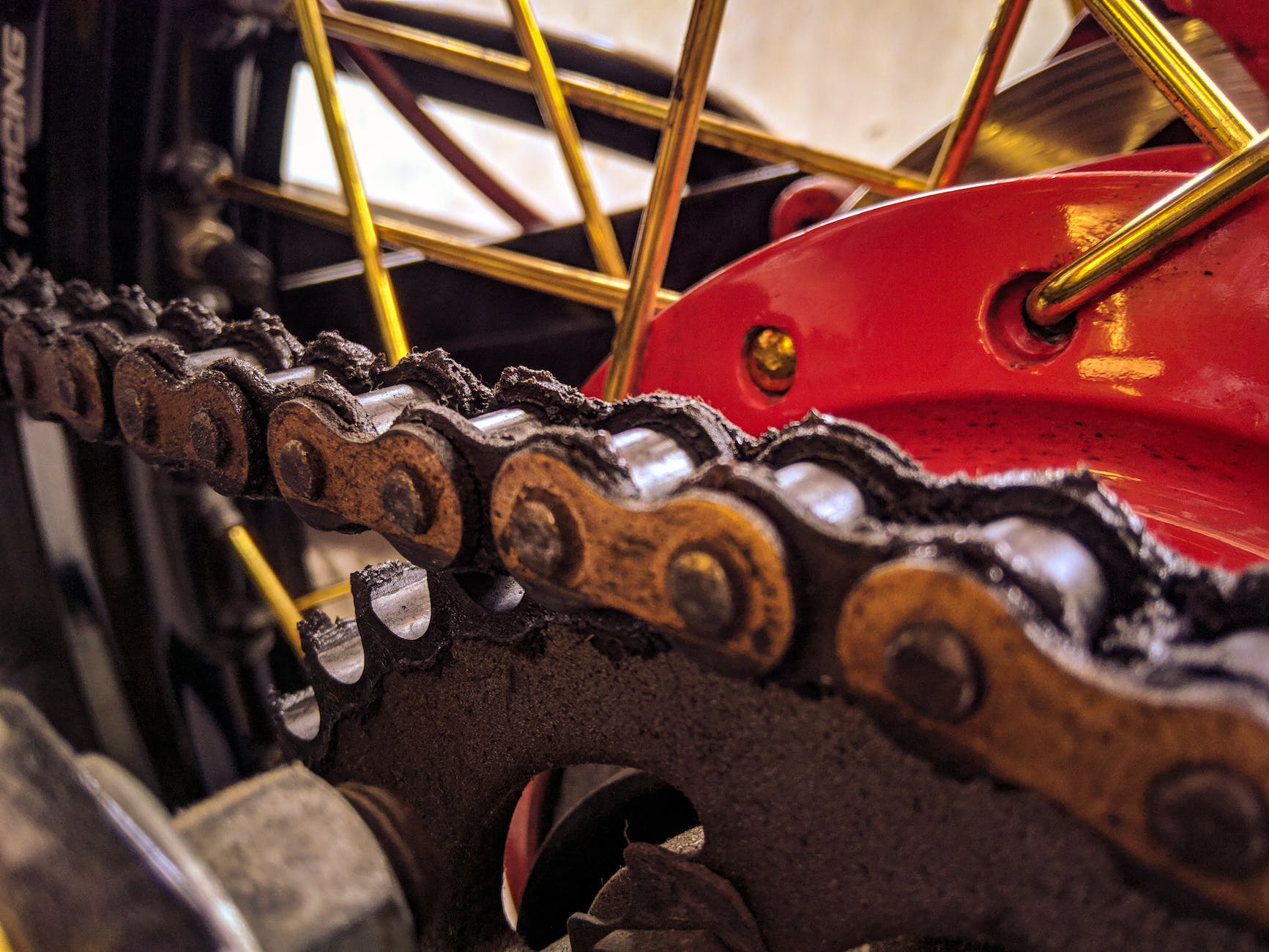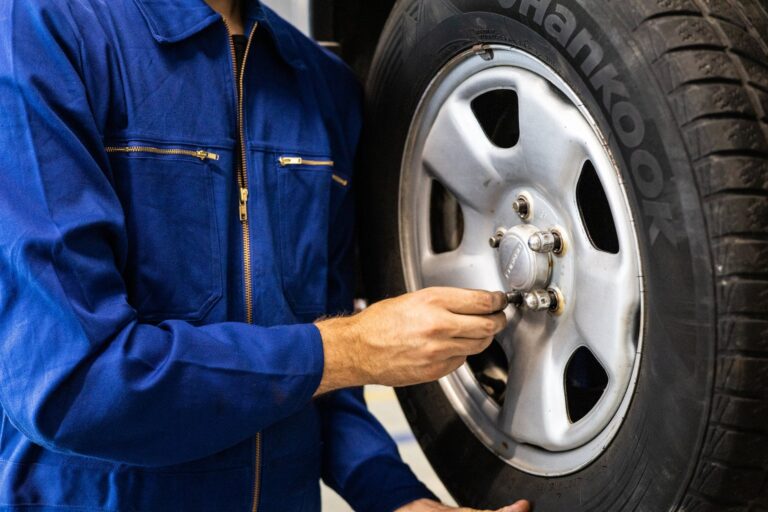Understanding Brake Systems
When it comes to vehicle safety, the brake system plays a crucial role in ensuring your safety on the road. Understanding the components of the brake system and the importance of regular brake maintenance is essential for every car owner. Let’s explore the key aspects of brake systems and common brake issues.
Importance of Brake Maintenance
Proper brake maintenance is vital to ensure the reliability and effectiveness of your vehicle’s braking system. Neglecting brake maintenance can lead to potential safety risks and costly repairs. According to the National Motor Vehicle Crash Causation Survey, brake failure accounts for roughly 22% of all accidents caused by vehicular problems, rather than driver error (NuBrakes). Regular brake inspections and brake service help identify potential issues early on, allowing for timely repairs and preventing more extensive damage.
Routine brake maintenance includes inspecting brake pads, rotors, calipers, and brake fluid levels. Properly functioning brakes ensure optimal stopping power, shorter braking distances, and enhanced overall safety. It is recommended to follow the manufacturer’s maintenance schedule and have your brakes checked by a qualified brake mechanic regularly.
Common Brake Issues
Understanding common brake issues can help you identify potential problems and take appropriate action. Here are some key signs of brake system problems:
Brake Warning Light
If the brake warning light appears on your dashboard, it could indicate an issue with your Antilock Braking System (ABS) or the brake system itself. It is crucial to take your vehicle to a local dealer or repair shop to diagnose the problem and address it promptly. Ignoring a brake warning light can lead to compromised braking performance and safety concerns.
Squealing, Squeaking, or Grinding Noises
Unusual noises when applying the brakes, such as squealing, squeaking, or grinding, are often indicative of worn brake pads. Ignoring these noises can lead to damaged rotors and more expensive repairs. Brake pads are one of the more affordable brake components and should be replaced as soon as they show signs of excessive wear. To find a brake repair shop near you, consider checking our brake service directory.
Vibrations while Braking
Vibration experienced when braking or in the steering wheel can be a sign of warped rotors. Rotors should be resurfaced or replaced, if necessary, to ensure the proper functioning of the braking system. Ignoring vibrations can result in reduced braking performance and potential safety hazards. Prompt attention to rotor issues is crucial for maintaining optimal braking capabilities.
Leaking Brake Fluid
Leaking brake fluid is a serious concern that should be addressed immediately. It may indicate problems with the master cylinder, which is responsible for creating the hydraulic pressure necessary for braking. A brake fluid leak can compromise the effectiveness of the braking system, leading to potential brake failure. If you notice any signs of a brake fluid leak, it is important to have your vehicle inspected by a professional technician as soon as possible.
Soft or Spongy Brake Pedal
A “soft” brake pedal that goes all the way to the floor or feels spongy can indicate moisture in the brake system or a malfunctioning master cylinder. In either case, immediate attention is necessary to ensure safety on the road. A soft brake pedal can compromise your ability to stop the vehicle effectively, putting you and others at risk. Seek professional assistance to diagnose and address the issue promptly.
By understanding the importance of brake maintenance and recognizing common brake issues, you can take proactive steps to ensure the safety and reliability of your vehicle’s braking system. Regular brake inspections, timely repairs, and maintenance tasks such as brake fluid flush and replacement are integral to keeping your brakes in optimal condition. Remember, a well-maintained brake system can save lives and give you peace of mind on the road.
Components of a Drum Brake System
The drum brake system, commonly used in vehicles, especially in the rear wheels, consists of various components that work together to provide effective braking performance. Understanding these components is essential for proper maintenance and brake service. Let’s explore the key components of a drum brake system.
Brake Drum
The brake drum is a circular metal disc that is attached to the wheels and rotates along with them. It is typically made of grey cast iron material with graphite, which provides strength and good absorption of heat produced by friction. The diameter of the brake drum varies depending on the vehicle’s characteristics. The brake drum’s primary function is to provide a surface against which the brake shoes can press to generate friction and slow down or stop the vehicle (Frenkit, Wuling Indonesia).
Brake Plate
The brake plate is a pressed and punched sheet metal support that holds the hydraulically operated cylinder, fastening elements, and primary and secondary brake pads. Elastic springs connected to the brake plate allow the brake pads to move towards the drum and return to their initial position when the brake pedal is released. This movement ensures optimal contact between the brake pads and the brake drum, allowing for effective braking performance (Frenkit).
Brake Pads
The brake pads, or brake shoes in the case of drum brakes, are responsible for generating the friction necessary to stop the vehicle. There are two brake pads: a primary pad that applies greater force on the side against rotation, and a secondary pad shoe that uses more force on the side in favor of rotation. Both brake pads consist of two welded, crescent-shaped steel plates covered with brake linings. When the brake pedal is pressed, the brake pads press against the inner face of the brake drum, generating the necessary friction to slow down or stop the vehicle (Frenkit, Wuling Indonesia).
Pumps or Hydraulic Cylinders
In a drum brake system, pumps or hydraulic cylinders play a crucial role in the braking process. When the brake pedal is depressed, the pressure from the brake pump reaches the cylinder, and the pistons inside the cylinder move to apply force on the brake shoes. There are three types of cylinders depending on their purpose and type of braking: primary wheel cylinders, secondary wheel cylinders, and master cylinders. The hydraulic action created by the cylinders allows the brake shoes to press against the brake drum, generating friction for braking (Frenkit, Wuling Indonesia).
Return Springs
Return springs are responsible for retracting the brake pads or shoes once the brake pedal is released. There are separate return springs for primary and secondary brake pads, both of which must have sufficient force to bring the vehicle to a stop. These springs ensure that the brake pads do not remain in contact with the brake drum when the brakes are not applied, allowing for smooth and efficient operation of the brake system (Frenkit).
Adjustment Mechanism
The adjustment mechanism in the drum brake system maintains the minimum clearance between the brake pads or shoes and the brake drum. As the brake pads wear down over time, the clearance between them needs to increase to ensure effective braking. The adjustment mechanism ensures that the brake shoes are properly positioned and adjusted, allowing for optimal braking performance. Without proper adjustment, the brake shoes would wear out faster and require more force on the brake pedal to apply the brakes (Frenkit).
These components work in harmony to provide the necessary friction and braking force in a drum brake system. Regular brake maintenance and inspections are crucial to ensure that these components are functioning properly and to address any potential issues at an early stage. If you notice any signs of brake system problems, such as abnormal noises or vibrations, it is important to seek brake repair or brake replacement services promptly to maintain the safety and performance of your vehicle.
Components of a Disc Brake System
Disc brakes are a common type of braking system used in vehicles. They consist of several key components that work together to provide effective braking performance. Understanding these components is essential for maintaining and repairing the brake system. Let’s explore the main components of a disc brake system:
Brake Rotor
The brake rotor, also known as a brake disc, is a flat, circular metal component that attaches to the wheel hub. When the brake pedal is pressed, the brake pads clamp onto the rotor’s surface to create friction and slow down or stop the vehicle. The design of the rotor allows heat generated during braking to dissipate efficiently, reducing the risk of brake fade and ensuring stable braking performance even in wet conditions (Akebono Brake).
Brake Pads
Brake pads are the components that come into direct contact with the brake rotor. They are typically made of a friction material, such as ceramic, semi-metallic, or organic compounds. When the brake pedal is applied, hydraulic pressure forces the brake pads to clamp onto the rotor, creating the necessary friction to slow down or stop the vehicle. The selection of the appropriate brake pads is crucial for optimal braking performance, and periodic brake pad replacement is necessary to maintain safe and effective braking.
Brake Caliper
The brake caliper is a key component responsible for housing the brake pads and facilitating their movement. It is typically mounted around the brake rotor and contains pistons or cylinders that push the brake pads against the rotor when the brake pedal is pressed. There are two main types of disc brake calipers: opposed piston type and floating type. The opposed piston type features pistons on both sides of the rotor, while the floating type has pistons on only one side. The caliper design plays a critical role in ensuring proper brake pad alignment and even distribution of braking force (Akebono Brake).
Pressure Mechanism
The pressure mechanism, often referred to as the hydraulic system, is responsible for transmitting the force from the brake pedal to the brake caliper. When the driver applies pressure to the brake pedal, hydraulic fluid is forced through the brake lines, activating the caliper’s pistons to squeeze the brake pads against the rotor. This hydraulic pressure is essential for efficient and responsive braking.
By understanding the components of a disc brake system, car owners can better comprehend the importance of regular brake maintenance and the need for professional brake services. If you encounter any signs of brake system problems, such as a brake warning light, unusual noises, vibrations, or fluid leaks, it is crucial to have your brake system inspected and repaired promptly by a qualified brake mechanic. Proper maintenance and timely repairs ensure the safety and reliability of your vehicle’s braking system.
Signs of Brake System Problems
To ensure safe and reliable operation of your vehicle, it is important to be aware of signs that may indicate potential issues with your brake system. By recognizing these signs early on, you can address any problems promptly and seek the necessary brake services to keep your brakes in optimal condition. Here are several common signs of brake system problems to watch out for:
Brake Warning Light
One of the most obvious indicators of a brake system issue is the illumination of the brake warning light on your vehicle’s dashboard. This warning light may indicate a variety of problems, including issues with the Antilock Braking System (ABS) or the brake system itself. If the brake warning light appears, it is recommended to take your vehicle to a local dealer or repair shop to diagnose and address the problem promptly. Ignoring this warning could compromise the safety of your vehicle and its braking capabilities.
Squealing, Squeaking, or Grinding Noises
Unusual noises when applying the brakes, such as squealing, squeaking, or grinding sounds, should never be ignored. These noises often indicate wear on the brake pads. Over time, brake pads naturally wear down and require replacement. Ignoring these noises can lead to further damage, such as damaged rotors, which can result in more expensive repairs. It is important to address these noises promptly by having your brake pads inspected and replaced if necessary.
Vibrations while Braking
If you experience vibrations when applying the brakes or feel vibrations in the steering wheel, it could be a sign of warped rotors. Rotors play a crucial role in the braking system, as they provide a surface for the brake pads to grip and slow down the vehicle. Over time, rotors can become warped due to heat and friction. Resurfacing or, if necessary, replacing the rotors will ensure the proper functioning of the braking system and a smoother braking experience. If you notice vibrations while braking, it is advisable to have your vehicle inspected by a qualified brake mechanic.
Leaking Brake Fluid
Leaking brake fluid is a serious issue that requires immediate attention. Brake fluid plays a vital role in the hydraulic pressure system that enables efficient braking. If you notice any fluid leaks near the wheels or underneath the vehicle, it may indicate a problem with the master cylinder. The master cylinder is responsible for holding the brake fluid and exerting hydraulic pressure to engage the brakes. Promptly addressing a leaking brake fluid issue is essential to maintain the proper functioning of your brake system. It is recommended to have your vehicle inspected by a qualified technician and have the necessary brake repairs performed.
Soft or Spongy Brake Pedal
A soft or spongy brake pedal is another sign of a potential brake system problem. If you notice that your brake pedal feels unusually soft or sinks to the floor when applying pressure, it could indicate air in the brake lines or a problem with the brake master cylinder. Air in the brake lines can compromise the effectiveness of the braking system, while a faulty master cylinder may result in a loss of hydraulic pressure. It is important to address a soft or spongy brake pedal immediately by having your vehicle inspected by a qualified technician and having the necessary brake maintenance performed.
By being aware of these signs of brake system problems, you can take proactive steps to address any issues promptly. Regular brake inspections and maintenance are crucial to ensure the safety and reliability of your vehicle’s braking system. If you experience any of these signs or suspect any other brake system issues, it is recommended to consult with a qualified brake technician or visit a reputable brake repair shop to have your vehicle assessed and the necessary repairs performed.
Importance of Brake System Maintenance
Ensuring the safety and reliability of your vehicle’s braking system is of utmost importance. Regular maintenance of the brake system is crucial to prevent potential issues and maintain optimal performance. Let’s explore the key aspects of brake system maintenance.
Brake System Safety
The brake system is a critical component of your vehicle, responsible for slowing down or stopping your car when needed. According to the National Motor Vehicle Crash Causation Survey, brake failure accounts for approximately 22% of accidents caused by vehicular problems (NuBrakes). To ensure your safety and the safety of others on the road, it is essential to prioritize brake system maintenance.
Regular Brake Inspections
Regular brake inspections play a vital role in identifying potential issues before they become major problems. During a brake inspection, a qualified technician will assess the condition of various brake system components, such as brake pads, rotors, calipers, and brake lines. They will check for signs of wear, damage, or any other issues that may compromise the effectiveness of the brakes.
By scheduling regular brake inspections, you can address minor concerns early on, preventing them from escalating into more significant problems. It is recommended to have your brakes inspected at least once a year or as per the manufacturer’s guidelines. For brake inspections and other brake services, you can visit a local brake repair shop or mobile brake services that offer convenient on-site brake maintenance.
Brake Fluid Flush and Replacement
Brake fluid plays a crucial role in the braking system, transferring hydraulic pressure to engage the brakes. Over time, brake fluid can become contaminated with moisture, dirt, and other impurities, compromising its effectiveness in transmitting force. This can result in diminished braking performance and increased risk of brake failure.
To maintain the integrity of the brake system, it is important to schedule regular brake fluid flush and replacement. Flushing the brake fluid involves removing the old fluid and replacing it with fresh, clean fluid. The frequency of brake fluid flushes may vary depending on the manufacturer’s recommendations and driving conditions. It is typically recommended to flush the brake fluid every 2-3 years or as advised by your vehicle’s maintenance schedule.
By regularly flushing and replacing the brake fluid, you can ensure optimal brake system performance and extend the lifespan of brake system components. A professional brake service center can assist you with brake fluid flush and other brake maintenance tasks.
Proper brake system maintenance is essential for your safety and the longevity of your vehicle’s braking components. By prioritizing regular brake inspections and scheduling brake fluid flushes, you can help maintain the integrity and effectiveness of your brake system. Remember, if you encounter any signs of brake system problems, such as a soft brake pedal or leaking brake fluid, seek professional assistance promptly to address the issue.
Components of a Drum Brake System
Drum brake systems are commonly found in vehicles, particularly in the rear wheels. They consist of several components that work together to slow down or stop the vehicle. Let’s explore the key components of a drum brake system.
Brake Drum
The brake drum is a circular metal disc that is attached to the wheel and rotates along with it. It is typically made of grey cast iron material with graphite, providing strength and efficient absorption of heat produced by friction (Frenkit). The diameter of the brake drum varies depending on the vehicle’s characteristics. When the brake shoes press against the inner face of the drum, the resulting friction slows down or stops the rotation of the wheels (Wuling Indonesia).
Brake Plate
The brake plate is a pressed and punched sheet metal support that holds various components of the drum brake system. It typically consists of the hydraulically operated cylinder, fastening elements, and primary and secondary brake pads. Elastic springs connected to the brake plate allow the brake pads to move towards the drum when the brake pedal is pressed. These springs also ensure that the brake pads return to their initial position when the brake pedal is released (Frenkit).
Brake Pads
The brake pads, also known as brake shoes, are responsible for generating the friction necessary to stop the vehicle. There are two brake pads in a drum brake system: a primary pad that applies greater force on the side against rotation, and a secondary pad shoe that uses more force on the side in favor of rotation. Both brake pads consist of two welded, crescent-shaped steel plates covered with brake linings. When the brake pedal is pressed, the brake pads press against the inner surface of the brake drum, creating the necessary friction to slow down or stop the vehicle (Frenkit).
Pumps or Hydraulic Cylinders
Pumps or hydraulic cylinders are essential components of the drum brake system. They are responsible for the lateral movement of the brake shoes, applying force against the brake drum. When the brake pedal is depressed, the pressure from the brake pump reaches the cylinder, and the pistons inside the cylinder move to apply force on the brake shoes. There are different types of cylinders depending on their purpose and type of braking (Frenkit).
Return Springs
Return springs play a crucial role in the drum brake system by retracting the brake pads once the brake pedal is released. These springs ensure that the brake pads do not continuously rub against the brake drum, preventing unnecessary friction and wear. It is important for the return springs to have sufficient force to bring the vehicle to a stop effectively (Frenkit).
Adjustment Mechanism
The adjustment mechanism in a drum brake system maintains the minimum clearance between the brake pads and the brake drum. As the brake pads wear down over time, the clearance needs to increase to ensure effective braking. Without proper adjustment, the brake shoes would wear out faster and require more force on the brake pedal to apply the brakes. The adjustment mechanism ensures that the brake shoes maintain the optimal distance from the brake drum for efficient braking (Frenkit).
Understanding the components of a drum brake system is essential for proper brake maintenance and identifying any potential issues. Regular brake inspections, such as those provided by brake services, can help ensure the safety and functionality of your vehicle’s braking system. If you notice any signs of brake system problems, such as a soft or spongy brake pedal or vibrations while braking, it is important to have your brakes checked by a qualified brake mechanic or brake repair shop.







